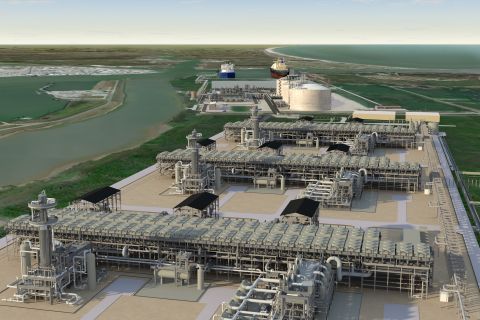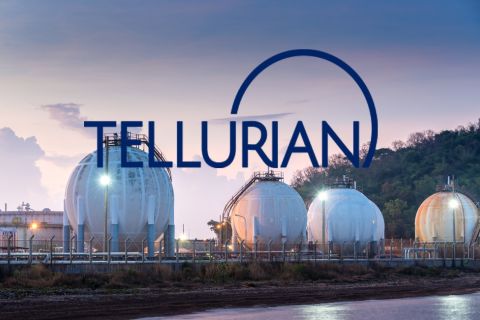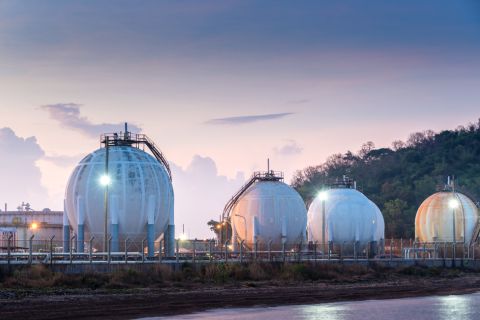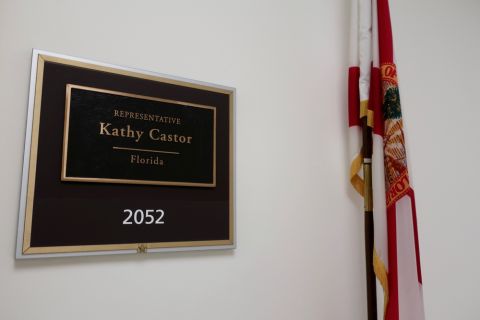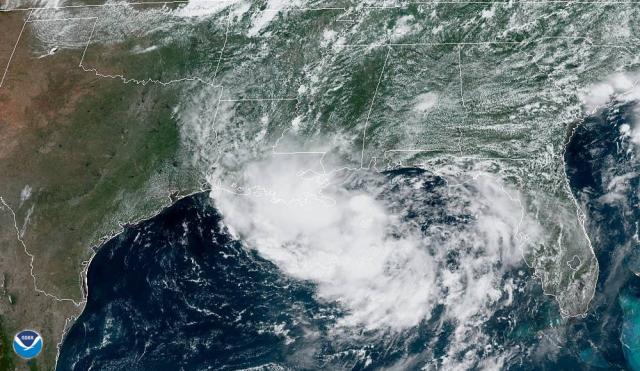
Radar image from NOAA’s GOES-East of thunderstorms gathering over the U.S. Gulf of Mexico around midday on July 10. (Source: NOAA.gov)
[Editor's note: Updated at 2:49 p.m. CDT July 10.]
U.S. oil producers on July 10 cut nearly a third of offshore Gulf of Mexico (GoM) crude output as what could be one of the first major storms of the Atlantic hurricane season threatened production.
Fifteen oil production platforms and four rigs were evacuated in the north central area of the Gulf of Mexico, according to the U.S. Bureau of Safety and Environmental Enforcement (BSEE), ahead of a storm expected to become a hurricane by July 12.
UPDATE:
Storm Barry Cuts US Gulf Coast Oil Production In Half
Exxon Mobil Corp., Chevron Corp., Anadarko Petroleum Corp. and others withdrew staff and some cut production from deepwater platforms as a safety precaution.
The withdrawals helped push U.S. oil futures up 4% to more than $60 a barrel, and lifted gasoline prices. The U.S. GoM produces 17% of U.S. crude oil and 5% of natural gas. Gasoline futures also climbed more than 3.5% in New York trading.
A tropical depression is expected to form in the Gulf by July 11, with the potential to strengthen to a hurricane by the weekend, according to the National Hurricane Center. The system could produce a storm surge and heavy rainfall from Louisiana to the upper Texas coast.
Louisiana Gov. John Bel Edwards on July 10 declared a state of emergency, warning that the storm system could bring up to 15 inches of rain and hurricane-force winds to parts of Louisiana. A state of emergency allows for the activation of the state's National Guard and the setting of curfews.
The Atlantic hurricane season runs from June through November.
BSEE said more than 600,000 barrels per day of Gulf oil production and 17% of the region's natural gas production was shut by producers.
Exxon Mobil has evacuated nonessential staff from three platforms in the Gulf, but anticipates little effect on its production, spokeswoman Julie King said.
Anadarko, the third-largest U.S. Gulf producer by volume, is stopping oil and gas production and removing workers from its four central Gulf facilities: the Constitution, Heidelberg, Holstein and Marco Polo platforms. It is also evacuating nonessential staff from eastern Gulf platforms, the company said.
Royal Dutch Shell Plc expanded an earlier offshore evacuation to seven platforms and shut more production, the company said on Wednesday.
Operations at the Louisiana Offshore Oil Port, the only U.S. port where the largest crude tankers can load and unload, were normal on Wednesday morning, a spokeswoman said.
Oil refiners Motiva Enterprises' and Marathon Petroleum Corp. were monitoring the developing storm and prepared to implement hurricane plans, the companies said.
Motiva's Port Arthur, Texas, refinery was one of four refineries in east Texas inundated by more than 5 feet (1.52 m) of rain in a single day during 2017's Hurricane Harvey.
Chevron, Phillips 66, Exxon Mobil and Royal Dutch Shell Plc were preparing for heavy rain and wind at refineries along the Gulf Coast, company representatives said. Exxon Mobil reported operations at its Gulf Coast refineries were normal the morning of July 10.
Chevron has shut production at five Gulf platforms—Big Foot, Blind Faith, Genesis, Petronius and Tahiti—and has begun to evacuate all workers at those offshore facilities, spokeswoman Veronica Flores-Paniagua said.
BP Plc, the second-largest oil producer in the Gulf by volume, is shutting all production at its four Gulf platforms—Thunder Horse, Atlantis, Mad Dog and Na Kika—which produce more than 300,000 barrels of oil equivalent per day.
BHP Group Plc was also removing staff from its two offshore energy platforms, according to a company statement.
Two independent offshore producers, Fieldwood Energy LLC and LLOG Exploration Company LLC, declined to comment.
Recommended Reading
Segrist: The LNG Pause and a Big, Dumb Question
2024-04-25 - In trying to understand the White House’s decision to pause LNG export permits and wondering if it’s just a red herring, one big, dumb question must be asked.
FERC Approves Extension of Tellurian LNG Project
2024-02-19 - Completion deadline of Tellurian’s Driftwood project was moved to 2029 and phase 1 could come online in 2027.
White House Open to Ending LNG Export Pause in Push for Ukraine Aid, Sources Say
2024-04-02 - Reversing the pause could be tolerable to the White House in order to advance Ukraine aid, in part because the pause has no bearing on near-term LNG exports, the White House sources said.
US Expected to Supply 30% of LNG Demand by 2030
2024-02-23 - Shell expects the U.S. to meet around 30% of total global LNG demand by 2030, although reliance on four key basins could create midstream constraints, the energy giant revealed in its “Shell LNG Outlook 2024.”
Commentary: Fact-checking an LNG Denier
2024-03-10 - Tampa, Florida, U.S. Rep. Kathy Castor blamed domestic natural gas producers for her constituents’ higher electricity bills in 2023. Here’s the truth, according to Hart Energy's Nissa Darbonne.

